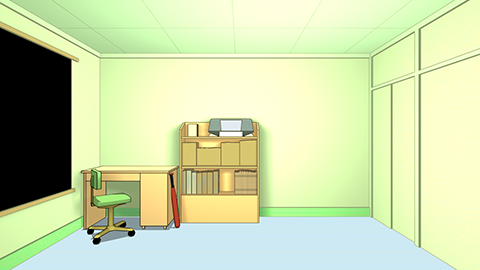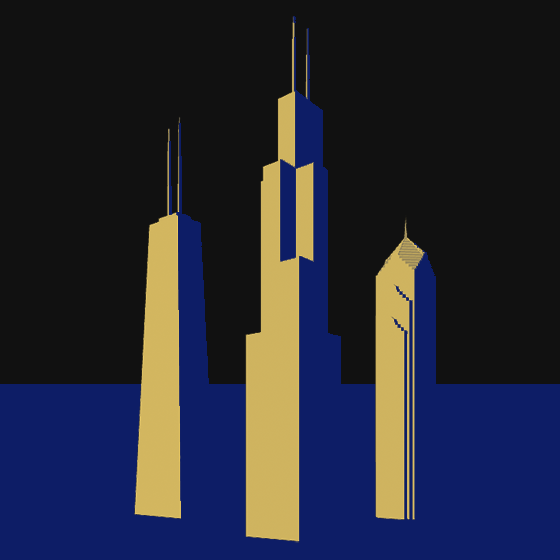A few weeks ago, I mentioned that I am working on creating anime-style backgrounds within LightWave. I was a little delayed on this side project by a small cold but I finally finished a draft of my first basic scene, which is the main character’s room from FLCL. You can view the reference image either in my original post or directly here.
This draft is as much as I plan on doing for this particular side project. My goal was to create techniques that will aid me in creating better backgrounds for traditional-looking animations, and I accomplished that goal.

Although not all items in the scene are modeled in my version, I was able to test out a few different techniques: the background has interesting variation and lighting, individual objects do not have hard shadows, edges are outlined (sometimes subtly), and I even practiced some basic UV mapping again.
I left the top shelf of books textured with a single color. The bottom shelf, however, has a separate image applied as a UV map to give more variety to the books and give a more distinct, painted look. All of the surfaces use a variation of my watercolor surface I described earlier, with some added nodes to clamp the shadows to a lighter color.
One thing I realized while working on this scene is that external toon-shaders (such as LightWave’s “Super Cel Shader”) are no longer needed in more recent versions of LightWave. Even in 9.6, which is a few generations behind, I can create the same functionality as “Super Cel Shader” using only two nodes. I noticed that BESM, another cel-shader in LightWave, has additional features that are not easily replicated using nodes (such as edge tracing and inking), but I have not experimented with those features if they are actually useful or not.
